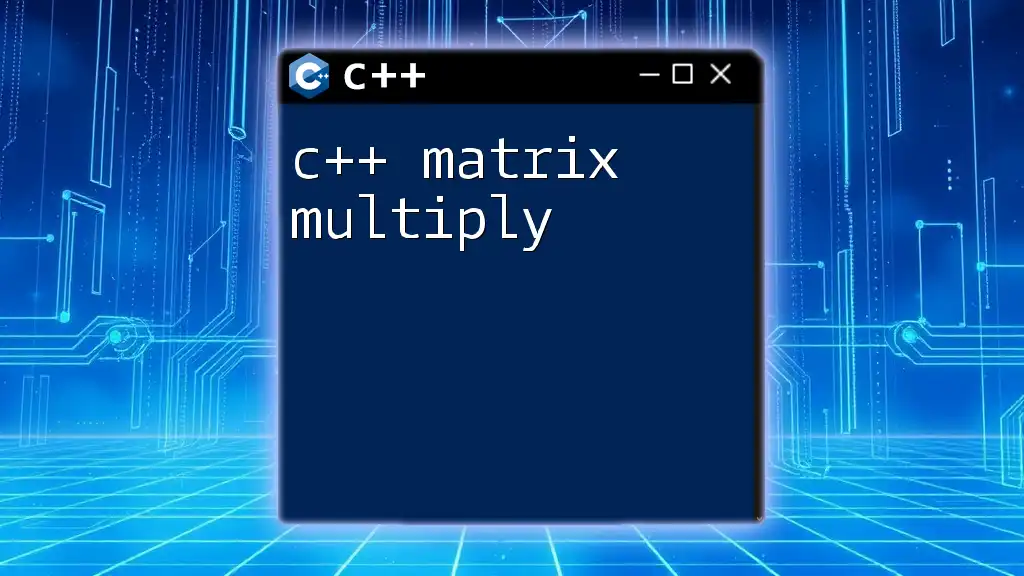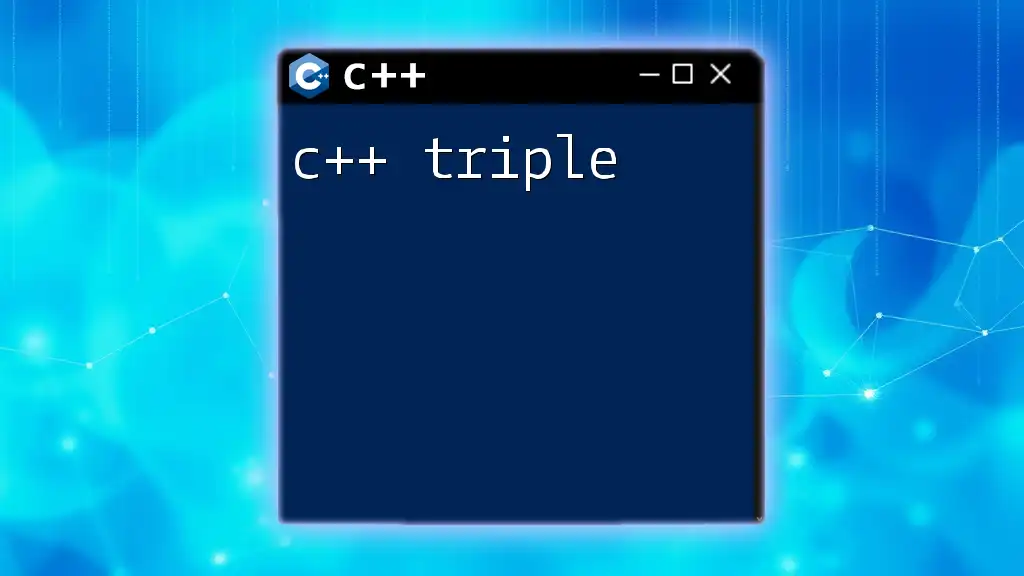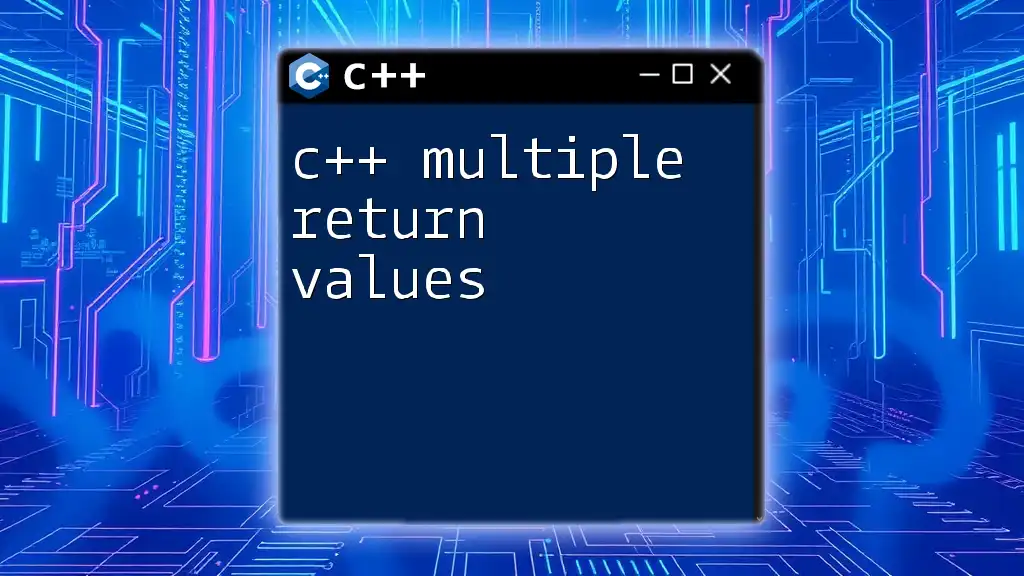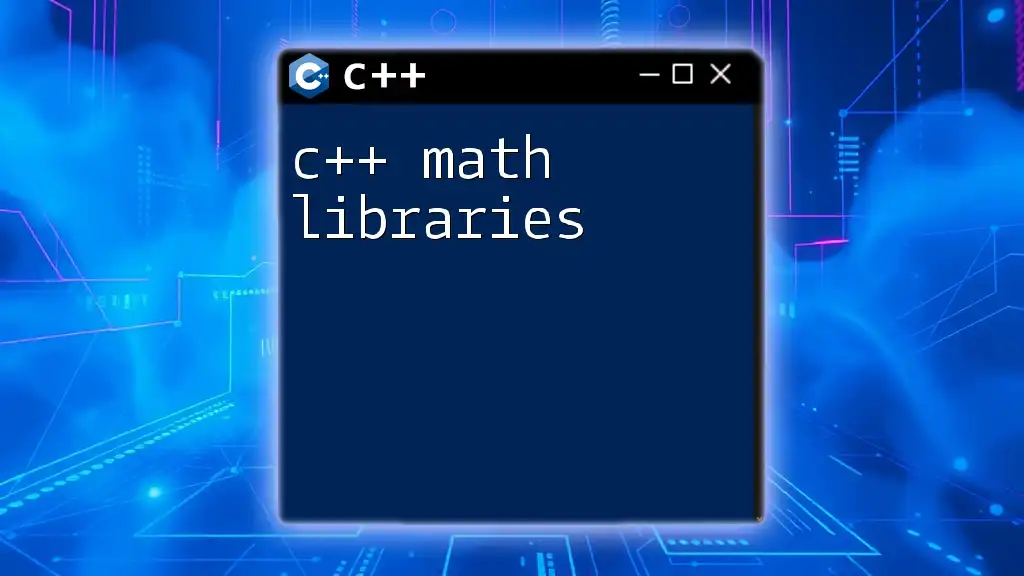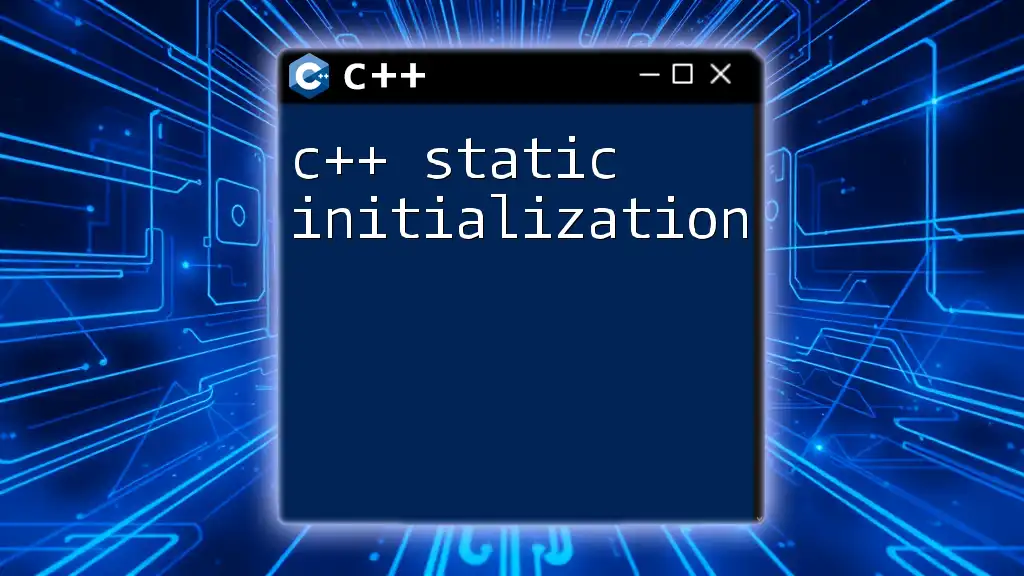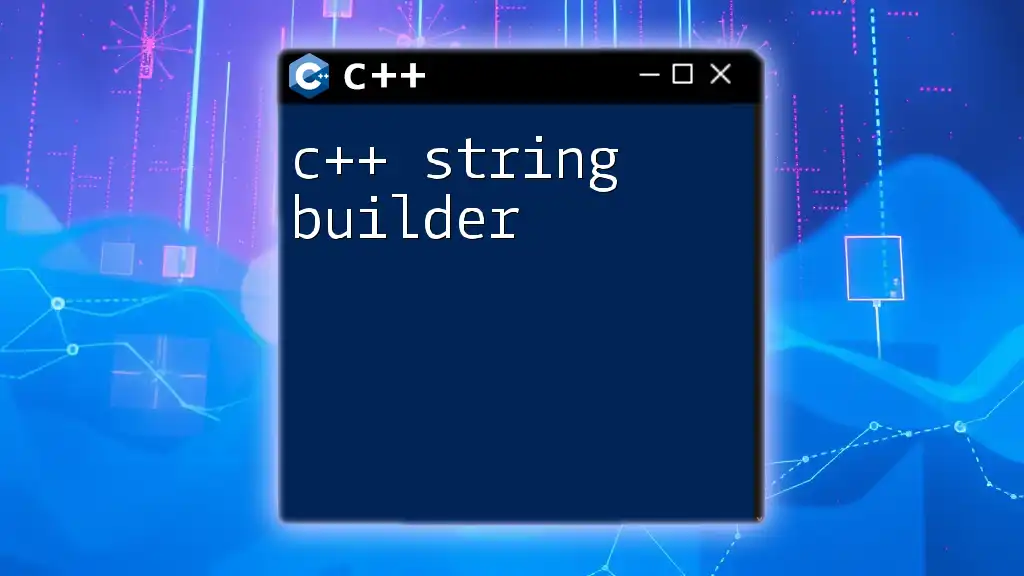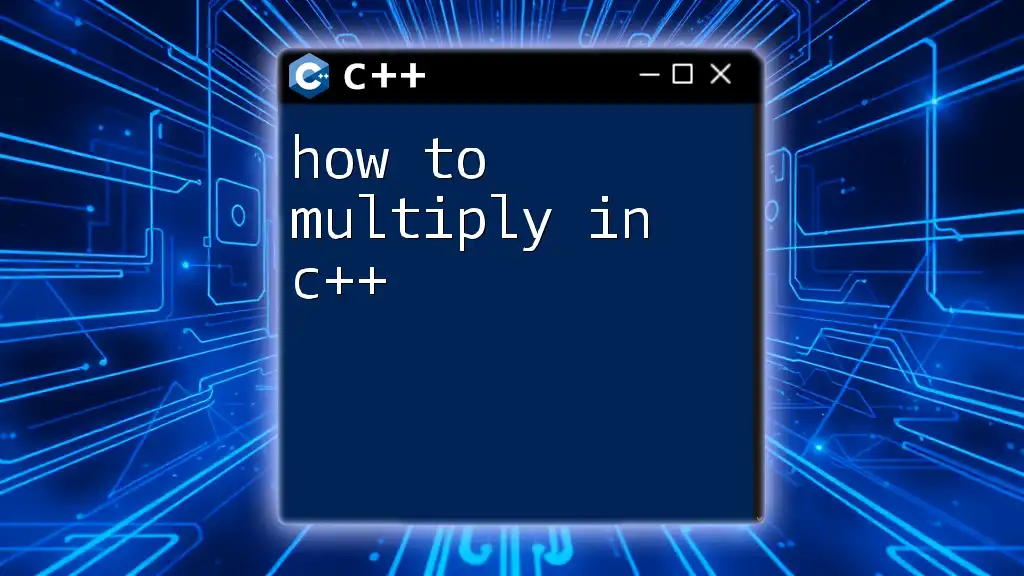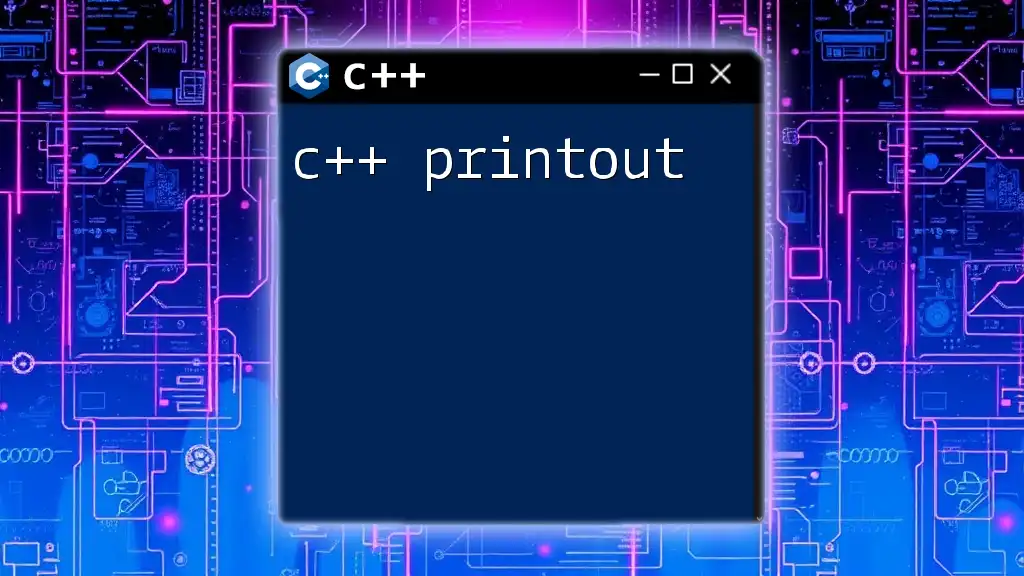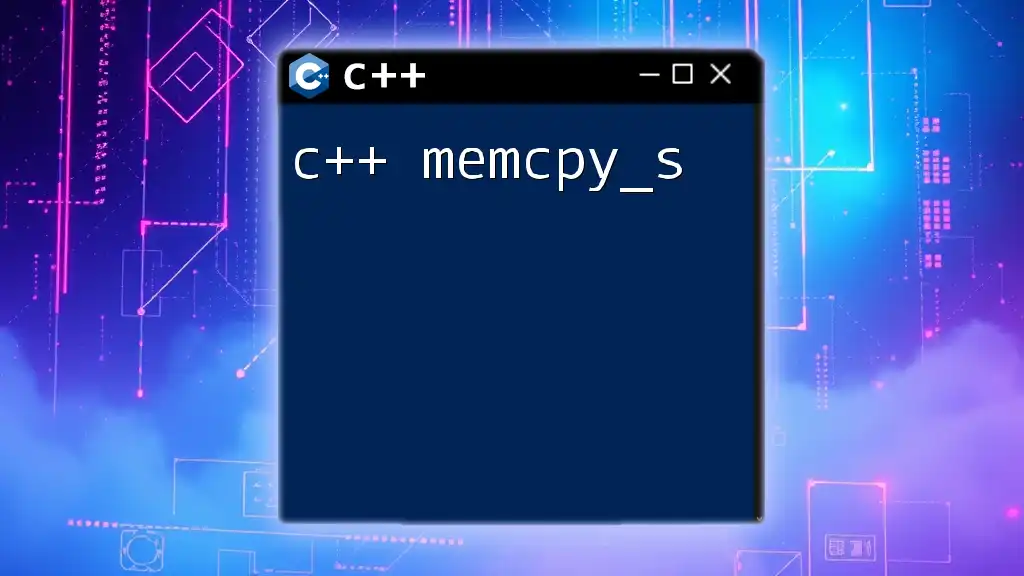C++ matrix multiplication involves creating a function that takes two 2D arrays (matrices) as inputs and produces their product as another 2D array. Here's a simple code snippet demonstrating this:
#include <iostream>
using namespace std;
void multiplyMatrices(int first[10][10], int second[10][10], int result[10][10], int row1, int col1, int row2, int col2) {
for (int i = 0; i < row1; ++i) {
for (int j = 0; j < col2; ++j) {
result[i][j] = 0;
for (int k = 0; k < col1; ++k) {
result[i][j] += first[i][k] * second[k][j];
}
}
}
}
// Example usage
int main() {
int first[10][10] = {{1, 2}, {3, 4}};
int second[10][10] = {{5, 6}, {7, 8}};
int result[10][10];
multiplyMatrices(first, second, result, 2, 2, 2, 2);
for (int i = 0; i < 2; ++i) {
for (int j = 0; j < 2; ++j) {
cout << result[i][j] << " ";
}
cout << endl;
}
return 0;
}
Understanding Matrix Multiplication
What is Matrix Multiplication?
Matrix multiplication involves the combination of two matrices to produce a third matrix. In simple terms, this operation allows you to compute the resulting matrix by multiplying the rows of the first matrix by the columns of the second matrix. This technique is crucial in various applications across computer science, physics, and engineering, particularly in fields like graphics programming, machine learning, and scientific computing.
Why C++ for Matrix Multiplication?
C++ is an excellent choice for implementing matrix multiplication due to its performance, control over memory management, and low-level programming capabilities. C++ offers features like pointers, references, and dynamic memory allocation, allowing developers to optimize their algorithms and manage resources effectively. This ensures faster execution times, especially when handling large matrices.
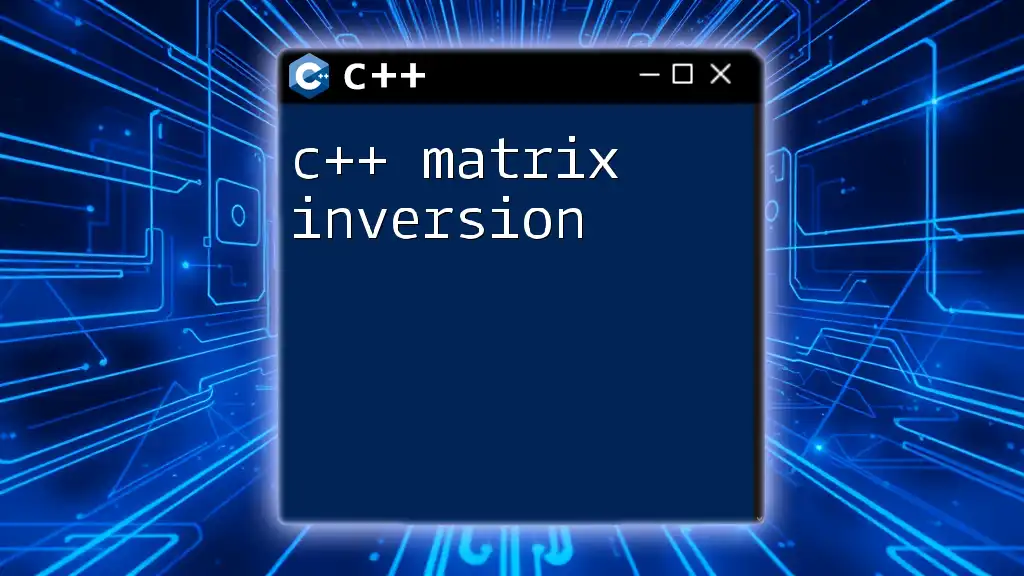
Setting Up Your C++ Environment for Matrix Operations
Required Libraries and Tools
To perform matrix operations in C++, you might consider using libraries designed for linear algebra, such as Eigen or Armadillo. These libraries provide optimized functions and easy-to-use interfaces that greatly enhance productivity.
To get started, ensure that you have a C++ development environment set up with a modern compiler (like g++) and an appropriate IDE or text editor (e.g., Visual Studio, Code::Blocks, or even simple editors like VS Code).
Basic C++ Knowledge Required
Before diving into matrix multiplication, it's essential to have a grasp of core C++ concepts like arrays, loops, and function definitions. Understanding these fundamentals will enable you to manipulate matrices effectively within your programs.
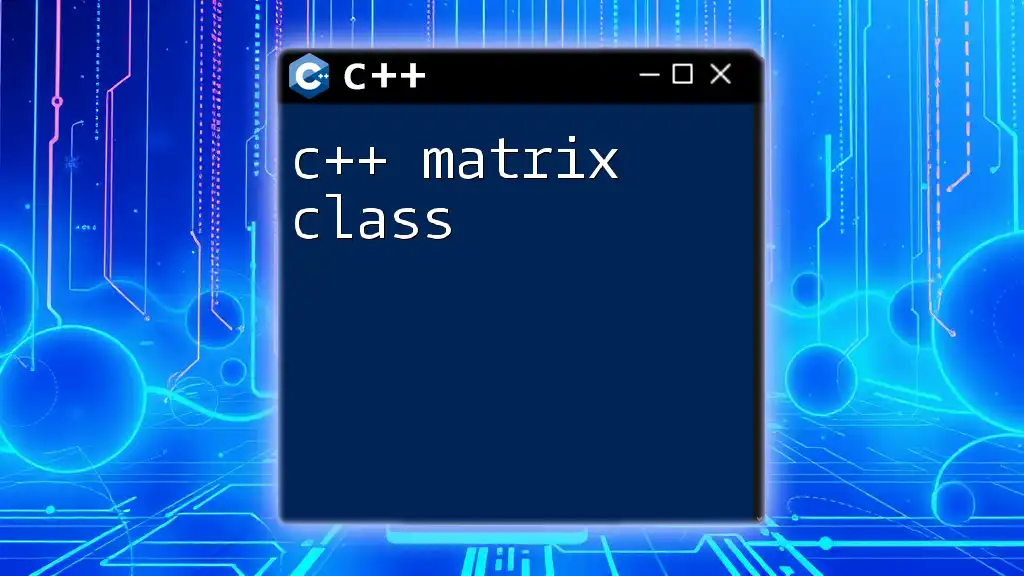
Implementing Matrix Multiplication in C++
Basic Structure of a Matrix in C++
In C++, matrices can be represented using 2D arrays or `std::vector`. Here's a simple way to create a matrix using a 2D array:
const int MAX_SIZE = 10;
int matrix[MAX_SIZE][MAX_SIZE];
You can initialize this matrix and fill it with values as required.
Writing the Matrix Multiplication Function
Function Signature
When creating a function for matrix multiplication, you typically need to define parameters that specify the matrices being multiplied and their dimensions.
Code Snippet: Matrix Multiplication Function
Here is a basic implementation of a matrix multiplication function:
void multiplyMatrices(int firstMatrix[][MAX_SIZE], int secondMatrix[][MAX_SIZE], int result[][MAX_SIZE], int rowFirst, int columnFirst, int rowSecond, int columnSecond) {
// Initialize the result matrix to zero
for (int i = 0; i < rowFirst; ++i) {
for (int j = 0; j < columnSecond; ++j) {
result[i][j] = 0;
}
}
// Implement the multiplication algorithm
for (int i = 0; i < rowFirst; ++i) {
for (int j = 0; j < columnSecond; ++j) {
for (int k = 0; k < columnFirst; ++k) {
result[i][j] += firstMatrix[i][k] * secondMatrix[k][j];
}
}
}
}
In this snippet, the multiplication is done using three nested loops. Each element in the resulting matrix is computed by multiplying corresponding elements from the rows of the first matrix with the columns of the second matrix.
Multiplication Algorithm Explained
- Initialize the result matrix to zero. This is necessary to ensure that any garbage values do not affect your calculations.
- Loop through each row of the first matrix and each column of the second matrix.
- For every pair of row and column, iterate through the column elements of the first matrix and the row elements of the second. Multiply these values and accumulate them into the corresponding position in the result matrix.
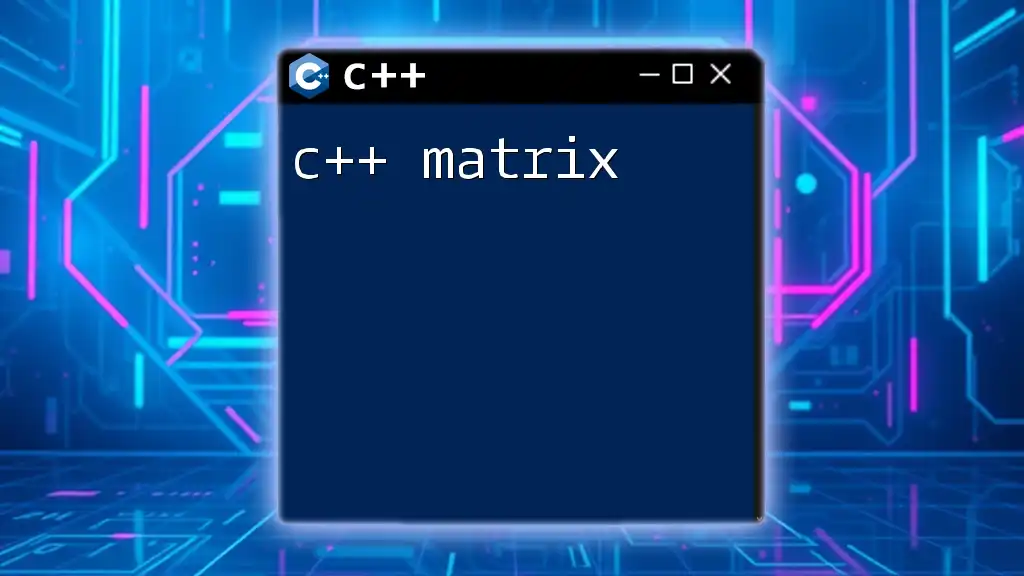
Handling Different Matrix Sizes
Validating Matrix Dimensions
Matrix multiplication is only feasible when the number of columns in the first matrix equals the number of rows in the second matrix. To prevent runtime errors, it’s advisable to implement a validation check for dimensions before performing multiplication. Here’s how you can do this:
if (columnFirst != rowSecond) {
std::cerr << "Matrix dimensions are incompatible for multiplication!" << std::endl;
return;
}
Dynamic Matrix Size Handling
Instead of using fixed-size arrays, you can employ vectors to handle matrices of dynamic sizes, which can be particularly useful in real-world applications. Here’s an example of how to manage dynamic matrices using `std::vector`:
#include <vector>
void multiplyMatricesDynamic(const std::vector<std::vector<int>>& firstMatrix,
const std::vector<std::vector<int>>& secondMatrix,
std::vector<std::vector<int>>& result) {
int rowFirst = firstMatrix.size();
int columnFirst = firstMatrix[0].size();
int rowSecond = secondMatrix.size();
int columnSecond = secondMatrix[0].size();
if (columnFirst != rowSecond) {
std::cerr << "Matrix dimensions are incompatible for multiplication!" << std::endl;
return;
}
result.resize(rowFirst, std::vector<int>(columnSecond, 0)); // Resize and initialize result matrix
for (int i = 0; i < rowFirst; ++i) {
for (int j = 0; j < columnSecond; ++j) {
for (int k = 0; k < columnFirst; ++k) {
result[i][j] += firstMatrix[i][k] * secondMatrix[k][j];
}
}
}
}
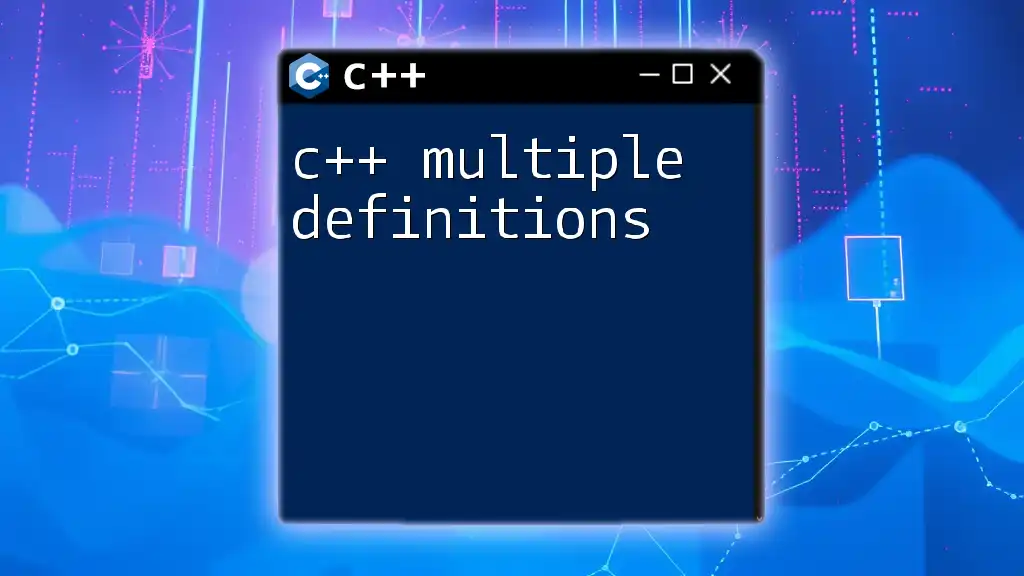
Best Practices for Matrix Multiplication in C++
Efficiency Considerations
When dealing with larger matrices, efficiency becomes critically important. The naive multiplication algorithm has a time complexity of O(n^3), which can be quite slow for large matrices. There are optimized algorithms, including Strassen’s algorithm, which utilizes divide-and-conquer techniques to reduce complexity. Additionally, employing parallel processing methods can significantly speed up calculations, especially on multi-core processors.
Memory Management Tips
Efficient memory management is incredibly important when working with large datasets. Be mindful of allocation and deallocation of memory to avoid memory leaks. Utilizing smart pointers, such as `std::unique_ptr`, can help automatically manage the lifetime of dynamically allocated memory.
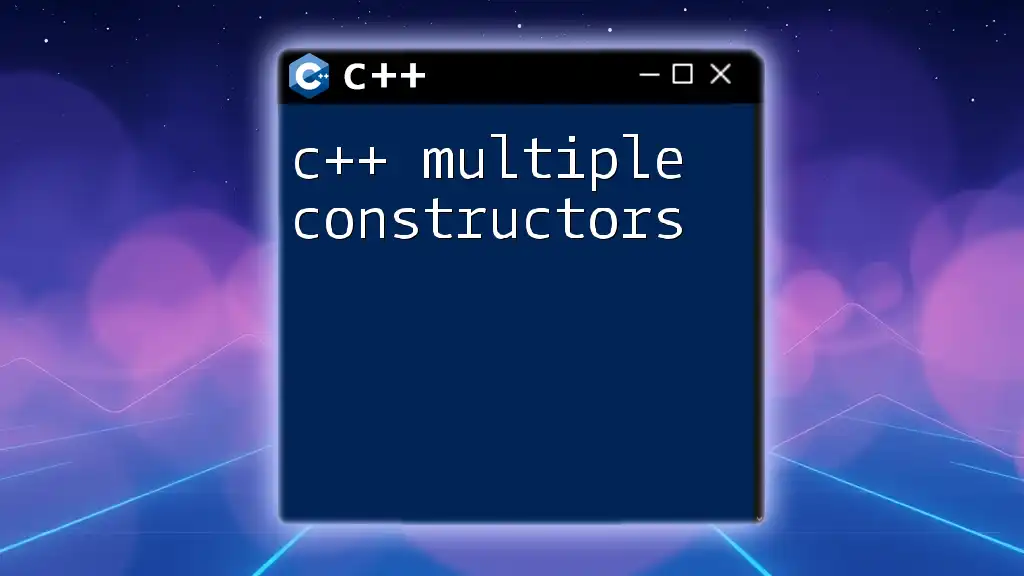
Example Applications of C++ Matrix Multiplication
Scientific Computing
Matrix multiplication is prevalent in scientific computing, where simulations and models often rely on complex mathematical transformations. Engineers and scientists leverage matrix operations to solve problems in fluid dynamics, structural analysis, and much more.
Computer Graphics
In graphics programming, matrices are essential for complex transformations such as translating, rotating, and scaling objects within a 2D or 3D space. Understanding matrix multiplication is crucial for implementing sophisticated rendering techniques.
Machine Learning
Matrix multiplication plays a central role in machine learning, particularly in neural networks. Training algorithms involve extensive matrix calculations, where data input and weights of neurons are represented in matrix form. The manipulation of these matrices through multiplication is key for backpropagation and model optimization.
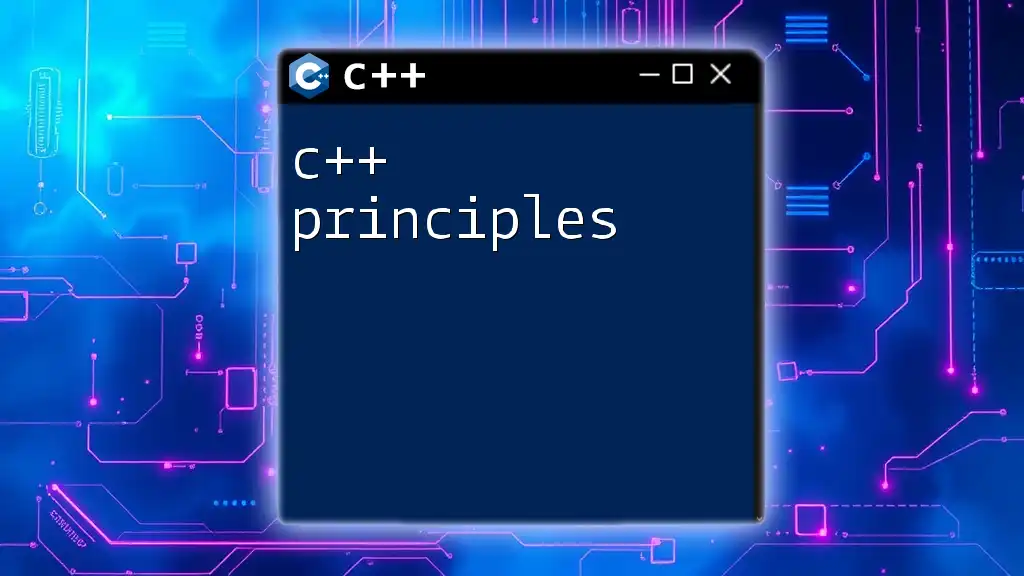
Conclusion
Recap of Key Points
Understanding how to c++ matrix multiply effectively is fundamental for numerous applications in programming and mathematics. This guide has introduced you to the mechanisms of matrix multiplication, practical coding examples, and real-world applications.
Further Learning Resources
To deepen your knowledge of C++ and matrix operations, consider exploring resources such as comprehensive programming books, online courses focused on data structures, and algorithms, or tutorials that specifically cover linear algebra in programming contexts.
Call to Action
Now it’s your turn! Implement this code and play around with matrices of different sizes. Share your findings and any interesting applications you come up with. Explore other matrix operations and enhance your C++ skill set!
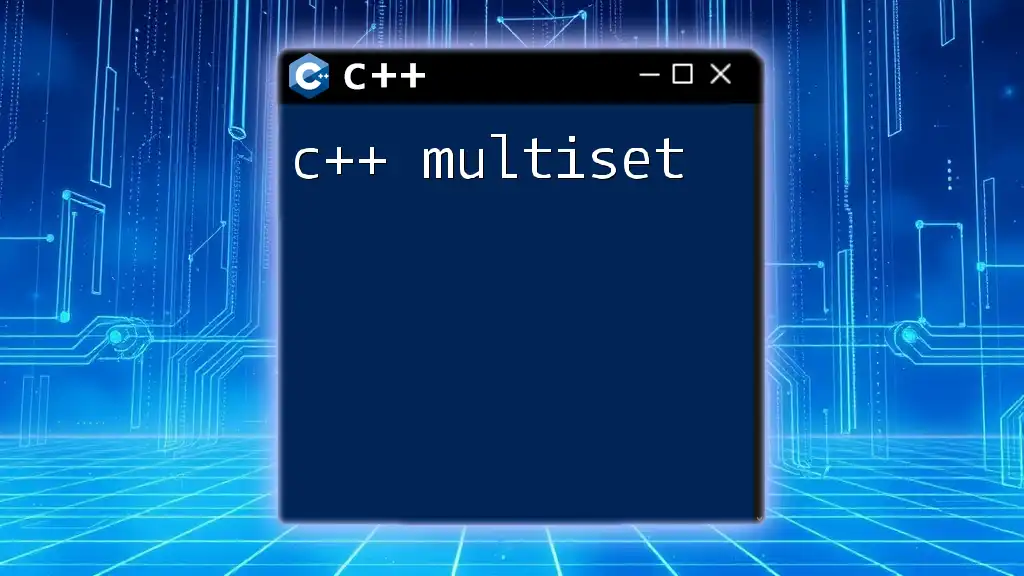
Additional Resources
Recommended Libraries for Matrix Multiplication in C++
For advanced usage, consider libraries like Eigen for fast matrix calculations and many pre-built functions, or Armadillo, which offers a straightforward interface for linear algebra.
Community and Support
If you encounter challenges or have specific questions, don’t hesitate to seek help from communities like Stack Overflow or engage with fellow programmers on platforms such as the C++ subreddit. Learning from others can significantly accelerate your journey into the world of C++ programming.

